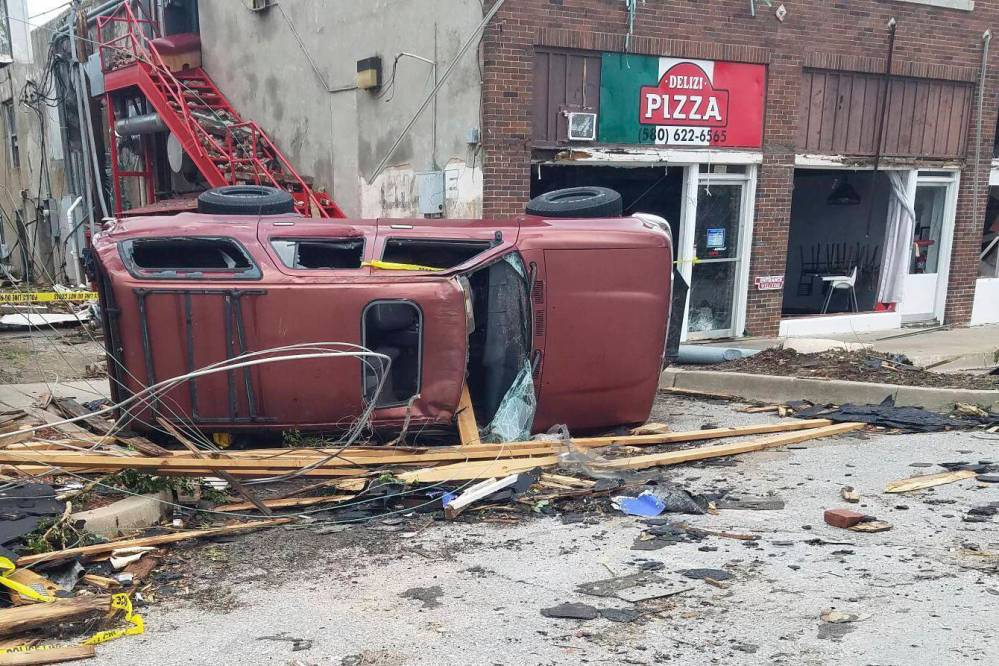Reaping what we’ve sown
Advertisement
Read this article for free:
or
Already have an account? Log in here »
To continue reading, please subscribe:
Monthly Digital Subscription
$0 for the first 4 weeks*
- Enjoy unlimited reading on winnipegfreepress.com
- Read the E-Edition, our digital replica newspaper
- Access News Break, our award-winning app
- Play interactive puzzles
*No charge for 4 weeks then price increases to the regular rate of $19.00 plus GST every four weeks. Offer available to new and qualified returning subscribers only. Cancel any time.
Monthly Digital Subscription
$4.75/week*
- Enjoy unlimited reading on winnipegfreepress.com
- Read the E-Edition, our digital replica newspaper
- Access News Break, our award-winning app
- Play interactive puzzles
*Billed as $19 plus GST every four weeks. Cancel any time.
To continue reading, please subscribe:
Add Free Press access to your Brandon Sun subscription for only an additional
$1 for the first 4 weeks*
*Your next subscription payment will increase by $1.00 and you will be charged $16.99 plus GST for four weeks. After four weeks, your payment will increase to $23.99 plus GST every four weeks.
Read unlimited articles for free today:
or
Already have an account? Log in here »
Hey there, time traveller!
This article was published 16/05/2024 (541 days ago), so information in it may no longer be current.
We’ve written about following the money before.
We’re coming back to that theme because the data is getting worse.
In several parts of the United States, home insurers are fleeing from the market, because insuring for risks isn’t a worthwhile business anymore. And they’re citing climate change as the cause.

AP Photo/Ken Miller
Tornado damage in Sulphur, Okla., April 28.
Insurers pulling up stakes from some markets should probably be unsurprising: Floridians have seen insurance companies depart from the market because of the rising costs of major storms. People in Oregon and California, struck by large forest fires, have also seen insurance companies either stop writing new policies or leave the market entirely because risks outweigh the money coming in from premiums.
Prices have risen dramatically for coverage from insurers who stay. Deductibles are also rising, leaving homeowners on the hook for larger portions of damage.
But the trend is speeding up fast.
New analysis by the New York Times shows that home insurance, as a business, is facing some very strong headwinds in the U.S.
In 2014, the home insurance business was unprofitable — with losses outstripping premiums — in eight states.
In 2015, it was just three states — Massachusetts, Rhode Island and South Dakota.
It’s climbed pretty much steadily since then. Last year, insurers paid out more than they charged in premiums in 18 states.
Here’s the list: Arkansas, Colorado, Georgia, Hawaii, Iowa, Illinois, Indiana, Kentucky, Michigan, Minnesota, Missouri, Mississippi, Ohio, Oklahoma, Tennessee, Utah, Washington and Wisconsin.
Now think about where the states are located, geographically — it’s no longer just coastal regions facing large storms that are being affected, it’s the Midwest as well.
Here’s what two insurance company spokespeople told the Times about their companies leaving some states: “Climate change is real,” Bill Montgomery, chief executive of Celina Insurance Group told the newspaper. “We can’t raise rates fast enough or high enough.” Secura Insurance stopped selling coverage in 12 states in February. A spokeswoman for the company, Kristen Heiges, told the Times erratic weather was to blame. “The volatility has been all over the place,” she said. The Times points out that home insurers in Iowa dealt with US$1.3 billion in losses last year, four times what they lost 10 years ago.
And while that’s all south of the border, the changes don’t stop on the artificial line that is the American/Canadian border.
The insurance business in Canada has seen total claims for more than $3 billion in damages in both of the last two years, and an increase in home insurance rates virtually across the country. Manitoba led the pack with a 13.1 per cent increase in rates between 2022 and 2023.
There is a frightening knock-on effect of the inability to get insurance, and the resulting inability to get a mortgage. And that’s what the removal of potential buyers might do to house prices, which are often the single largest asset of retirees.
A dearth of buyers, or the inability of a block of potential buyers to get mortgages, could drive down housing prices. But lower prices doesn’t mean everything is rosy for buyers, especially if they can’t afford to insure their purchases.
It’s all connected; the environment, the economy, and individuals. For every action, an equal and opposite reaction.
The problem is that there isn’t a heck of a lot that can be done to slow the impetus of a changeing climate: scientists warned for years that increasing temperatures would mean increases in the size and strength of storms — along with wide-ranging changes in rainfall amounts, raning from drought to flood.
We are, quite literally, reaping the whirlwind.






